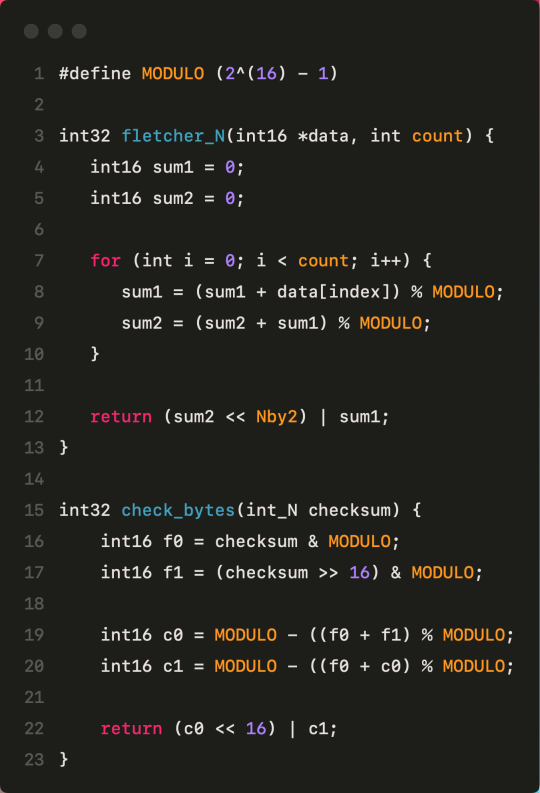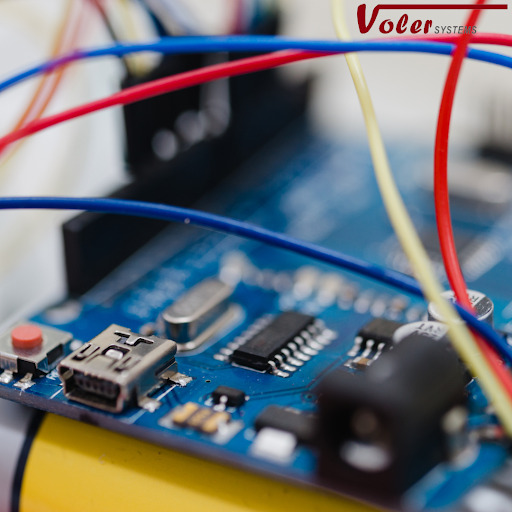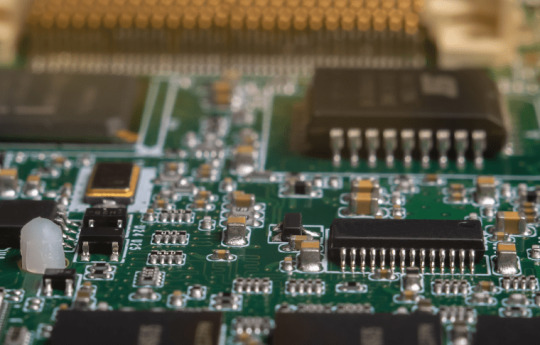#FPGA Design
Explore tagged Tumblr posts
Text

One of the key advantages of FPGA design is the ability to customize hardware to specific application requirements. Unlike fixed-function ASICs, FPGAs allow for reconfiguration, enabling engineers to adapt and refine designs without costly and time-consuming hardware revisions. This flexibility not only accelerates product development cycles but also reduces risk, making FPGA an attractive solution for industries that demand rapid innovation and adaptability.
0 notes
Text
youtube
Use this trick to Save time : HDL Simulation through defining clock
Why is this trick useful? Defining a clock in your simulation can save you time during simulation because you don't have to manually generate the clock signal in your simulation environment. Wanted to know how to define and force clock to simulate your digital system. Normally define clock used to simulate system with clock input. But I am telling you this trick for giving values to input ports other than clock. It will help you to save time in simulation because you do not need to force values to input ports every time. Lets brief What we did - gave some clock frequency to input A, like we gave 100. Than we made Half the frequency of clock to 50 and gave it to Input B. In similar way if we have 3rd input too we goanna half the frequency again to 25 and would give to next input.
Subscribe to "Learn And Grow Community"
YouTube : https://www.youtube.com/@LearnAndGrowCommunity
LinkedIn Group : https://www.linkedin.com/groups/7478922/
Blog : https://LearnAndGrowCommunity.blogspot.com/
Facebook : https://www.facebook.com/JoinLearnAndGrowCommunity/
Twitter Handle : https://twitter.com/LNG_Community
DailyMotion : https://www.dailymotion.com/LearnAndGrowCommunity
Instagram Handle : https://www.instagram.com/LearnAndGrowCommunity/
Follow #LearnAndGrowCommunity
#HDL Design#Digital Design#Verilog#VHDL#FPGA#Digital Logic#Project#Simulation#Verification#Synthesis#B.Tech#Engineering#Tutorial#Embedded Systesm#VLSI#Chip Design#Training Courses#Software#Windows#Certification#Career#Hardware Design#Circuit Design#Programming#Electronics Design#ASIC#Xilinx#Altera#Engineering Projects#Engineering Training Program
2 notes
·
View notes
Text
"VHDL stands for ‘Very High Speed Integrated Circuit Hardware Description Language' "
pure poetry, the capitalization of letters not present in the acronym, the vagueness of "Very High Speed" (what makes something very high speed vs regular high speed?) . No explanation of where the missing letters went. And they say art and STEM don't mix
0 notes
Text
The Department of Electronics and Communication Engineering K.Ramakrishnan College of Technology, in association with the IEEE Student Branch, recently organized an insightful invited talk on “Demystifying FPGA Design: From Concept to Implementation.” Further, this event, featured Dr.M.Elangovan, Associate Professor, Department of Electronics & Communication Engineering, Government College of Engineering, Trichy. Moreover, nearly 122 third-year students from our department attended the session, actively participated, and greatly benefited from the expert insights shared.
For more interesting information CLICK HERE
#the best engineering college krct#quality engineering and technical education.#best college of technology in trichy#krct the best college of technology in trichy#k ramakrishnan college of technology trichy#top college of technology in trichy#best autonomous college of technology in trichy#the best college for b.tech#ECE Talk session on Demystifying FPGA Design at KRCT#What is FPGA?#Applications of FPGA Design#FPGA Design Flow#Programming the FPGA
0 notes
Text
High Performance FPGA Solutions

In today's rapidly evolving technological landscape, the demand for high-performance solutions is ever-increasing. Field-Programmable Gate Arrays (FPGAs) have emerged as versatile tools offering customizable hardware acceleration for a wide range of applications. Let's delve into the world of high performance FPGA solutions, exploring their key features, applications, challenges, recent advances, case studies, and future trends.
Introduction to High Performance FPGA Solutions
Definition of FPGA
Field-Programmable Gate Arrays (FPGAs) are semiconductor devices that contain an array of programmable logic blocks and configurable interconnects. Unlike Application-Specific Integrated Circuits (ASICs), FPGAs can be programmed and reprogrammed after manufacturing, allowing for flexibility and customization.
Importance of High Performance in FPGA Solutions
High performance is crucial in FPGA solutions to meet the demanding requirements of modern applications such as real-time data processing, artificial intelligence, and high-frequency trading. Achieving optimal speed, throughput, and efficiency is paramount for maximizing the effectiveness of FPGA-based systems.
Key Features of High Performance FPGA Solutions
Speed and Throughput
High performance FPGA solutions are capable of executing complex algorithms and processing vast amounts of data with exceptional speed and efficiency. This enables real-time decision-making and rapid response to dynamic inputs.
Low Latency
Reducing latency is essential in applications where response time is critical, such as financial trading or telecommunications. High performance FPGAs minimize latency by optimizing data paths and processing pipelines.
Power Efficiency
Despite their high performance capabilities, FPGA solutions are designed to operate within strict power constraints. Advanced power management techniques ensure optimal performance while minimizing energy consumption, making FPGAs suitable for battery-powered or energy-efficient devices.
Flexibility and Reconfigurability
One of the key advantages of FPGAs is their inherent flexibility and reconfigurability. High performance FPGA solutions can adapt to changing requirements by reprogramming the hardware on-the-fly, eliminating the need for costly hardware upgrades or redesigns.
Applications of High Performance FPGA Solutions
Data Processing and Analytics
FPGAs excel in parallel processing tasks, making them ideal for accelerating data-intensive applications such as big data analytics, database management, and signal processing.
Artificial Intelligence and Machine Learning
The parallel processing architecture of FPGAs is well-suited for accelerating AI and ML workloads, including model training, inference, and optimization. FPGAs offer high throughput and low latency, enabling real-time AI applications in edge devices and data centers.
High-Frequency Trading
In the fast-paced world of financial markets, microseconds can make the difference between profit and loss. High performance FPGA solutions are used to execute complex trading algorithms with minimal latency, providing traders with a competitive edge.
Network Acceleration
FPGAs are deployed in network infrastructure to accelerate packet processing, routing, and security tasks. By offloading these functions to FPGA-based accelerators, network performance and scalability can be significantly improved.
Challenges in Designing High Performance FPGA Solutions
Complexity of Design
Designing high performance FPGA solutions requires expertise in hardware architecture, digital signal processing, and programming languages such as Verilog or VHDL. Optimizing performance while meeting timing and resource constraints can be challenging and time-consuming.
Optimization for Specific Tasks
FPGAs offer a high degree of customization, but optimizing performance for specific tasks requires in-depth knowledge of the application domain and hardware architecture. Balancing trade-offs between speed, resource utilization, and power consumption is essential for achieving optimal results.
Integration with Existing Systems
Integrating FPGA-based accelerators into existing hardware and software ecosystems can pose compatibility and interoperability challenges. Seamless integration requires robust communication protocols, drivers, and software interfaces.
Recent Advances in High Performance FPGA Solutions
Improved Architectures
Advancements in FPGA architecture, such as larger logic capacity, faster interconnects, and specialized processing units, have led to significant improvements in performance and efficiency.
Enhanced Programming Tools
New development tools and methodologies simplify the design process and improve productivity for FPGA developers. High-level synthesis (HLS) tools enable software engineers to leverage FPGA acceleration without requiring expertise in hardware design.
Integration with Other Technologies
FPGAs are increasingly being integrated with other technologies such as CPUs, GPUs, and ASICs to create heterogeneous computing platforms. This allows for efficient partitioning of tasks and optimization of performance across different hardware components.
Case Studies of Successful Implementation
Aerospace and Defense
High performance FPGA solutions are widely used in aerospace and defense applications for tasks such as radar signal processing, image recognition, and autonomous navigation. Their reliability, flexibility, and performance make them ideal for mission-critical systems.
Telecommunications
Telecommunications companies leverage high performance FPGA solutions to accelerate packet processing, network optimization, and protocol implementation. FPGAs enable faster data transfer rates, improved quality of service, and enhanced security in telecommunication networks.
Financial Services
In the highly competitive world of financial services, microseconds can translate into significant profits or losses. High performance FPGA solutions are deployed in algorithmic trading, risk management, and low-latency trading systems to gain a competitive edge in the market.
Future Trends in High Performance FPGA Solutions
Increased Integration with AI and ML
FPGAs will play a vital role in accelerating AI and ML workloads in the future, especially in edge computing environments where low latency and real-time processing are critical.
Expansion into Edge Computing
As the Internet of Things (IoT) continues to grow, there will be increasing demand for high performance computing at the edge of the network. FPGAs offer a compelling solution for edge computing applications due to their flexibility, efficiency, and low power consumption.
Growth in IoT Applications
FPGAs will find widespread adoption in IoT applications such as smart sensors, industrial automation, and autonomous vehicles. Their ability to handle diverse workloads, adapt to changing requirements, and integrate with sensor networks makes them an ideal choice for IoT deployments.
Conclusion
In conclusion, high performance FPGA solutions play a crucial role in driving innovation and accelerating the development of advanced technologies. With their unparalleled speed, flexibility, and efficiency, FPGAs enable a wide range of applications across industries such as aerospace, telecommunications, finance, and IoT. As technology continues to evolve, the demand for high performance FPGA solutions will only continue to grow, shaping the future of computing.
0 notes
Text
celebrating fall with fletcher's checksum
This post originally appeared on my website.
why are checksums useful for fpga development?
Checksum functions are useful for error detection and data integrity. With respect to FPGA architecture development, a checksum can ensure the system is able to retain its state. For example, an FPGA programmed to behave like an AND gate should not start to act like an OR gate due fluctuations in voltage or temperature. Such problems may be caught by computing the checksum of the bitstream before configuring the FPGA, operating the device in the lab, and then extracting the bitstream and re-computing the checksum to ensure it has not changed.
The last two FPGAs that I worked on-with Indiana University's SAIL-IN Lab and the QuickLogic Corporation-used a scan chain configuration interface which lent itself well to bitstream verification via checksum. The scan chain acts like a serial shift register, stringing together all the configuration chain flip-flops in the FPGA fabric. As the bitstream flows through the head of the scan chain, one bit at a time, its checksum may be computed; and later re-computed as it flows out of the tail. For context, imagine a small, thirty-two flop scan chain and the corresponding bitstream, 0xdeadbeef. On the way in, the Fletcher's (32-bit) checksum will be 0xf13b. If the post-configuration checksum does not match, the engineers would know that there is an issue with the FPGA architecture.
Fletcher's checksum also produces check bytes (or a "tag"), which can be appended to the end of the original data, such that the new checksum of the data and the check bytes is zero. For the example bitstream 0xdeadbeef, the resulting check bytes are 0xd2f1. And the checksum of 0xdeadbeefd2f1 is 0x0.
fletcher's checksum in systemverilog
Based mostly on the Wikipedia entry for Fletcher's checksum, I produced a parameterized, three-state module which computes the checksum and check bytes of a data stream. The SystemVerilog closesly follows the below psuedo-code. For the Fletcher-32 checksum, data arrives as 16-bit half-words.

Eventually, I'd like to wrap it in a SPI interface and submit it to TinyTapeout, but for now here's the bare RTL. The most up-to-date code is also available on GitHub:

#engineering#computer engineering#fpga#verilog#systemverilog#hardware design#engineering student#studyblr
0 notes
Text
0 notes
Link
FPGA design is a rapidly growing field that is becoming increasingly important in the world of technology. As the demand for FPGA design professionals continues to grow, many institutes in Hyderabad are now offering training programs to help individuals acquire the skills and knowledge needed to excel in this field.
One such institute is the RTL Institute of Technology, which is located in the heart of Hyderabad. The institute offers a wide range of training programs, including FPGA design, RTL design, and VHDL programming. The curriculum is designed to provide students with a comprehensive understanding of FPGA design, including the latest industry trends and best practices.
Another institute that offers FPGA design training in Hyderabad is the FPGA Institute of Technology. The institute offers a wide range of courses, including FPGA design basics, advanced FPGA design, and VHDL programming. The curriculum is designed to provide students with a comprehensive understanding of FPGA design, including the latest industry trends and best practices.
In addition to these institutes, there are many other training centers in Hyderabad that offer FPGA design and RTL design training. Some of these centers include the VLSI Institute of Technology, the FPGA Institute of India, and the RTL Institute of India.
Overall, Hyderabad is an excellent place to study FPGA design and RTL design, with many institutes offering high-quality training programs that are designed to help individuals acquire the skills and knowledge needed to excel in this field. With the growing demand for FPGA design professionals, the training provided by these institutes is sure to be in high demand in the years to come.
In conclusion, FPGA Design and RTL Design are the most in-demand skills in current technology era. Hyderabad has some of the best institutes which provide training in FPGA and RTL design. Institutes like RTL Institute of Technology and FPGA Institute of Technology are some of the top institutes in Hyderabad which provides training in FPGA and RTL design. These institutes provide students with a comprehensive understanding of FPGA design, including the latest industry trends and best practices.
0 notes
Text

Apart from the FPGA design, Voler Systems formulated the necessary firmware for board functionality testing that enabled to customer to finalize their firmware development. Voler Systems worked closely with their mechanical design team to match the device’s electrical, mechanical, and environmental requirements. Their engineers made sure that the device was functional, durable, and reliable under the extreme conditions, often common during military operations.
#Electronic Design Services#Electronic Product Design#Electronics Design Company#Electronics Design Services#FPGA Design#FPGA Development
1 note
·
View note
Text
1 note
·
View note
Text
youtube
VHDL Tutorial - Complete Guide to VHDL Process Statement for Beginners [20 mins] [Easy Way]
Welcome to this comprehensive VHDL tutorial where we will dive into the VHDL process statement. In this easy-to-follow guide, we will take you through the syntax and usage of the VHDL process statement, catering especially to beginners. This tutorial will provide you with a thorough understanding of the VHDL process and how it can be effectively implemented in your projects.
Subscribe to "Learn And Grow Community"
YouTube : https://www.youtube.com/@LearnAndGrowCommunity
LinkedIn Group : https://www.linkedin.com/groups/7478922/
Blog : https://LearnAndGrowCommunity.blogspot.com/
Facebook : https://www.facebook.com/JoinLearnAndGrowCommunity/
Twitter Handle : https://twitter.com/LNG_Community
DailyMotion : https://www.dailymotion.com/LearnAndGrowCommunity
Instagram Handle : https://www.instagram.com/LearnAndGrowCommunity/
Follow #LearnAndGrowCommunity
#VHDL tutorial#VHDL process statement#VHDL syntax#VHDL beginner's guide#VHDL tutorial for beginners#VHDL process explained#VHDL process tutorial#VHDL sequential logic#VHDL combinational logic#VHDL development#VHDL design#VHDL FPGA#VHDL ASIC#VHDL circuits#VHDL learning#VHDL education#VHDL digital design#VHDL programming#HDL Design#Digital Design#Verilog#VHDL#FPGA#Simulation#Project#Synthesis#Training#Career#Programming Language#Xilinx
1 note
·
View note
Text
https://www.acldigital.com/blogs/top-semiconductor-innovations-and-trends-2023
The global semiconductor industry has been steadily progressing and evolving. This progress can be directly attributed to the surging demand for innovative smart devices and connected technological advancements.

Semiconductors have become essential and are now extensively adopted in several industries - communications, consumer electronics, defense, transportation, automotive, aerospace, and clean energy.
0 notes
Text
ECE Talk session on Demystifying FPGA Design at KRCT
ECE Talk session on Demystifying FPGA Design at KRCT
Posted byBy adminJuly 2, 2024No Comments

The Department of Electronics and Communication Engineering K.Ramakrishnan College of Technology, in association with the IEEE Student Branch, recently organized an insightful invited talk on “Demystifying FPGA Design: From Concept to Implementation.” Further, this event, featured Dr.M.Elangovan, Associate Professor, Department of Electronics & Communication Engineering, Government College of Engineering, Trichy. Moreover, nearly 122 third-year students from our department attended the session, actively participated, and greatly benefited from the expert insights shared.
Key Highlights of the Invited Talk – Demystifying FPGA Design
Dr. M. Elangovan, a respected academician in the field of Electronics & Communication Engineering, provided a comprehensive overview of FPGA (Field-Programmable Gate Array) design, focusing on both theoretical and practical aspects. Thus, here are some key elements from the talk:
CLICK HERE.... for more information..
#the best autonomus college in tamilnadu#top college of technology in trichy#krct the best college of technology in trichy#k ramakrishnan college of technology trichy#the top college of technology in trichy krct#krct the top college of technology in trichy#best autonomous college of technology in trichy#the best b.tech college#Key Highlights of the Invited Talk – Demystifying FPGA Design#Understanding FPGA Design#Practical Applications of FPGA
0 notes
Text

Thy Graphics
A graphics card for the Cactus directly patterned after the OSI-440, with a few modernizations and optimizations.

I've replaced the eight 2102 SRAM chips with a pair of 2114s. I've also swapped the 2513 character generator ROM with a 2816 EEPROM which gives me not only lower case letters, but pseudo-graphical characters not unlike PETSCII. I've re-implemented the address select logic using modern parts (thank you 74688), and swapped the open-collector NAND gate based video/sync combiner circuit with one I copied from a PET video combiner circuit using 4066 analog switches. I didn't like how vague the delay taps were described, so I added in some jumpers to let the user pick their delay timing.


And hooo boy this had some motherfucking BUGS in it.
Vertical sync polarity was backwards.
Video pixel data was inverted too.
In fact, so were the DIP switches for the address select.
I also got half of the 74123 resistor/capacitor inputs backwards due to not paying attention to the idiosyncrasies of the symbols in my old version of KiCAD.
Oh, and the character ROM I stole from my OSI-540B replica has inverted bit order, so the characters looked backwards.
Every single problem I had was due to something being backwards.

Nothing a little debugging can't fix. Took about 7 hours of tired stumbling with help from friends in the retrotech crew to figure out all the little faults and work around them, but in the end...

It works! It fucking works! The Cactus has video! I made a fucking video card from scratch! I didn't use any dedicated video chipsets or FPGAs or microcontrollers or CRTCs or any of that shit. I didn't make VGA, I made composite video.

All 24x24 usable characters on screen in monochrome goodness from this tiny little PCB. Now onto the Rev B design!
282 notes
·
View notes